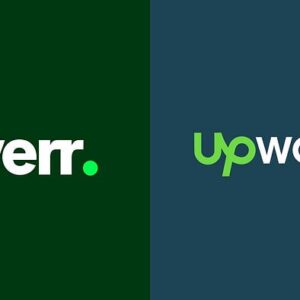Introduction
Have you ever dreamt of earning money while you sleep? It sounds like a fantasy, but with the right strategies, it’s entirely possible. Welcome to the world of passive income! In today’s digital age, online platforms offer countless opportunities to generate income without constant effort. Whether you’re looking to supplement your earnings or achieve complete financial independence, understanding these platforms is the first step. In this guide, we’ll dive deep into five online platforms that can help you create a steady stream of passive income.

What is Passive Income?
Passive income is the holy grail of financial freedom. Unlike active income, where you trade time for money (think of your regular 9-to-5 job), passive income is money you earn with minimal ongoing effort. It’s the financial equivalent of planting a tree: you do the hard work upfront, and then you get to enjoy the fruits for years to come. The key benefits? You can earn money around the clock, diversify your income streams, and build wealth over time.
Why Choose Online Platforms for Passive Income?
So, why should you consider online platforms for building passive income? First off, accessibility is a major advantage. Whether you’re sitting in a coffee shop in New York or relaxing on a beach in Bali, you can manage your online income streams from anywhere with an internet connection. Additionally, most online platforms require little to no upfront investment, making it easier for anyone to get started. The potential for growth and scalability is also massive; what starts as a small side hustle can quickly evolve into a full-time income stream.
Criteria for Choosing the Right Online Platform
Not all online platforms are created equal. Choosing the right one for you depends on several factors:
- Ease of Use: Is the platform user-friendly? Can beginners navigate it without a steep learning curve?
- Initial Investment and Fees: What are the start-up costs? Are there any hidden fees or commissions?
- Potential Returns: How much can you realistically expect to earn?
- Risks Involved: Are there any risks, and how can they be mitigated?
Understanding these criteria will help you make informed decisions and maximize your passive income potential.
Platform 1: Affiliate Marketing
What is Affiliate Marketing?
Affiliate marketing is one of the most popular ways to earn passive income online. In simple terms, you promote someone else’s product or service, and when someone makes a purchase through your unique affiliate link, you earn a commission. It’s a win-win situation: the company gets a sale, the customer finds a product they need, and you pocket a portion of the revenue.
How to Get Started with Affiliate Marketing
Getting started is easier than you might think. First, you’ll need to choose a niche—an area you’re passionate about or have expertise in. Next, sign up for affiliate programs related to your niche. Popular programs include Amazon Associates, ClickBank, and ShareASale. Once approved, you can start promoting products on your blog, social media, or YouTube channel.
Best Practices for Success in Affiliate Marketing
Success in affiliate marketing requires a strategic approach. Focus on building trust with your audience; this means only promoting products you truly believe in. Content is king, so create high-quality, informative content that solves problems for your readers. Finally, be patient. Affiliate marketing is not a get-rich-quick scheme; it takes time to build an audience and see significant returns.
Top Affiliate Marketing Platforms
- Amazon Associates: Ideal for beginners, offering a wide range of products.
- ClickBank: Specializes in digital products with high commission rates.
- ShareASale: A diverse platform with a variety of merchants and products.
Platform 2: Selling Digital Products
Types of Digital Products to Sell
Digital products are a fantastic way to generate passive income. These include eBooks, printables, templates, software, and music. The beauty of digital products is that you create them once and sell them indefinitely with no additional cost. For instance, if you’re a photographer, you could sell your high-quality images as stock photos. Or, if you’re a writer, consider publishing an eBook.
Creating and Marketing Your Digital Products
Creating digital products requires some initial effort, but once they’re made, the potential for passive income is huge. Start by identifying a market need or problem you can solve. Then, create a high-quality product that meets this need. Afterward, focus on marketing—use social media, SEO, and email marketing to reach your target audience.
Popular Platforms for Selling Digital Products
- Etsy: Great for selling printables and design templates.
- Gumroad: Perfect for independent creators selling eBooks, music, or software.
- Shopify: Ideal for setting up your own digital product store.
Platform 3: Online Courses and eLearning
The Growing Demand for Online Education
The eLearning industry is booming. With more people seeking to upskill from the comfort of their homes, creating and selling online courses has become a lucrative passive income stream. Whether you’re an expert in cooking, coding, or photography, there’s an audience eager to learn from you.
How to Create and Sell an Online Course
Start by identifying your area of expertise and the audience you want to target. Plan your course structure, including lessons, quizzes, and assignments. Record your content using a high-quality camera and microphone. Once your course is ready, you can host it on platforms like Udemy, Teachable, or Coursera.
Best Platforms for Hosting Online Courses
- Udemy: A popular platform with a vast audience, making it easier to reach potential students.
- Teachable: Allows you to create your own branded school with full control over pricing and content.
- Coursera: Ideal for partnering with universities or educational institutions to offer accredited courses.
Platform 4: Print on Demand
Understanding the Print on Demand Model
Print on Demand (POD) is a business model where you design products like t-shirts, mugs, or posters, and a third-party company prints and ships the products to customers on your behalf. You don’t need to worry about inventory or shipping, making it an excellent passive income stream.
Designing Products for Print on Demand
Your designs are the heart of your POD business. Use tools like Canva or Adobe Illustrator to create eye-catching graphics. Focus on niche markets—whether it’s cat lovers or fitness enthusiasts—to stand out in the crowded marketplace.
Top Print on Demand Platforms
- Printful: Integrates with eCommerce platforms like Shopify and Etsy.
- Redbubble: A marketplace that handles printing, shipping, and customer service.
- TeeSpring: Allows you to create and sell custom apparel with no upfront costs.
Platform 5: Real Estate Crowdfunding
What is Real Estate Crowdfunding?
Real estate crowdfunding allows you to invest in real estate projects without the need for large amounts of capital. Through online platforms, multiple investors pool their money to fund a real estate project. In return, investors receive a portion of the profits generated by the property.
How to Invest in Real Estate Crowdfunding
Start by researching the various platforms available. Look for platforms that offer detailed information on each project, including expected returns and risks. Most platforms allow you to invest with as little as $500, making it accessible for most people.
Leading Platforms for Real Estate Crowdfunding
- Fundrise: Offers a diverse range of real estate projects with low minimum investments.
- RealtyMogul: Provides access to both commercial and residential properties.
- CrowdStreet: Specializes in commercial real estate with higher potential returns.
Maximizing Your Earnings from Passive Income Platforms
Diversifying Your Income Streams
One of the best ways to maximize your passive income is by diversifying your income streams. Don’t rely on just one platform; instead, spread your efforts across multiple platforms to reduce risk and increase potential earnings.
Time Management and Automation Tools
Automation is your best friend when building passive income. Use tools like Hootsuite for social media scheduling, Mailchimp for email marketing, and Google Analytics for tracking performance. These tools help you save time and keep your income streams running smoothly.
Tracking and Analyzing Performance
Regularly monitor the performance of your income streams. Use analytics tools to track metrics like website traffic, conversion rates, and sales. By analyzing this data, you can make informed decisions and optimize your strategies for better results.
Common Challenges in Building Passive Income Online
Overcoming Initial Learning Curves
Starting something new is always challenging, and building passive income online is no exception. There’s a learning curve involved with each platform, but don’t get discouraged. Invest time in learning the ropes, and you’ll see the rewards down the line.
Dealing with Market Saturation
Many online platforms are highly competitive. To stand out, focus on niche markets or offer something unique. Whether it’s a fresh perspective or a better product, differentiation is key.
Managing Risks
Every investment comes with risks, and online passive income streams are no different. Whether it’s a platform going out of business or a market shift, it’s important to stay informed and have contingency plans in place.
Success Stories: Real-Life Examples of Passive Income Earners
Case Study 1: Successful Affiliate Marketer
John, a tech blogger, started affiliate marketing in 2015. By focusing on high-ticket items like software and electronics, he built a blog that now earns him $10,000 a month in passive income.
Case Study 2: Digital Product Seller
Sara, a graphic designer, began selling digital products on Etsy in 2018. Her best-selling wedding invitation templates have brought in over $50,000 in sales, allowing her to quit her day job.
Case Study 3: Online Course Creator
Mike, a former school teacher, turned his passion for photography into an online course. By offering detailed lessons on Udemy, he now makes $5,000 a month, all while helping others learn a new skill.
Case Study 4: Print on Demand Entrepreneur
Emily, a stay-at-home mom, created a series of cat-themed designs and started selling them on Redbubble. Her side hustle has turned into a thriving business, generating $3,000 a month in passive income.
Case Study 5: Real Estate Crowdfunding Investor
David, an accountant, began investing in real estate crowdfunding in 2017. By carefully selecting projects on Fundrise, he’s earned a 10% annual return on his investments, building a solid foundation for his retirement.
Legal and Tax Considerations for Passive Income
Understanding Legal Obligations
When earning money online, it’s important to understand the legal obligations that come with it. This includes registering your business, understanding the terms and conditions of each platform, and ensuring compliance with local laws.
Tax Implications and Reporting
Passive income is still taxable income. Keep detailed records of your earnings and expenses, and be aware of the tax laws in your country. Consider hiring an accountant to help with tax planning and reporting.
Hiring Professional Help
As your passive income streams grow, you may find it beneficial to hire professional help. This could include a lawyer for legal advice, an accountant for tax planning, or a virtual assistant to handle administrative tasks.
Future Trends in Online Passive Income
Emerging Platforms and Opportunities
The online landscape is constantly evolving, and new platforms are emerging all the time. Keep an eye on trends in technology, consumer behavior, and new business models to stay ahead of the curve.
Technological Advancements
Advancements in technology, such as AI and blockchain, are opening up new opportunities for passive income. Whether it’s investing in cryptocurrencies or using AI to automate your business, staying informed about technological trends can help you capitalize on these opportunities.
Shifting Consumer Behaviors
Consumer behaviors are constantly changing, and these shifts can create new opportunities for passive income. For example, the growing demand for eco-friendly products has opened up new markets for digital products and print-on-demand businesses.
Conclusion
Building passive income online is not only possible but also highly achievable with the right strategies. By leveraging the power of online platforms like affiliate marketing, selling digital products, online courses, print on demand, and real estate crowdfunding, you can create a diversified income portfolio that works for you 24/7. The journey requires time, effort, and persistence, but the rewards—financial freedom and the ability to live life on your terms—are well worth it. Start small, stay consistent, and watch your passive income grow.
FAQs
What is the best online platform for beginners to earn passive income? Affiliate marketing is often the best starting point for beginners due to its low entry barriers and potential for significant returns.
How much money can I realistically make from these platforms? Earnings vary widely depending on the platform and your level of effort. Some individuals make a few hundred dollars a month, while others earn six-figure incomes.
Are there any risks associated with earning passive income online? Yes, there are risks, including market saturation, platform changes, and economic downturns. It’s important to diversify your income streams and stay informed about industry trends.
How long does it take to start earning from these platforms? It depends on the platform and your commitment. Some people see results within a few months, while others may take a year or more to build a steady income.
Can I combine multiple platforms to increase my passive income? Absolutely! In fact, diversifying across multiple platforms is a smart strategy to maximize your earnings and minimize risk.







I am truly thankful to the owner of this web site who has shared this fantastic piece of writing at at this place.
Good post! We will be linking to this particularly great post on our site. Keep up the great writing